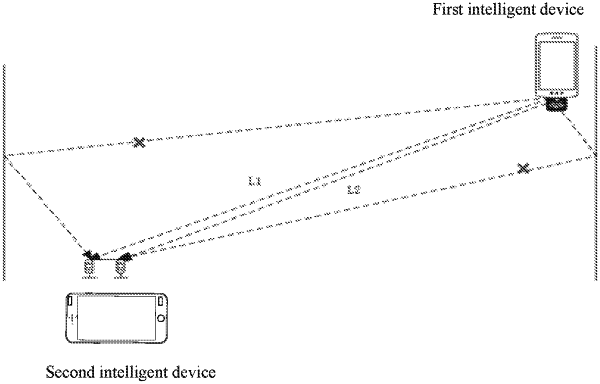| CPC G06F 9/30076 (2013.01) [G06F 1/163 (2013.01)] | 25 Claims |

|
1. A method for generating a control instruction, wherein the method for generating a control instruction comprises:
generating a control instruction in a case that it is determined that a relative angle between a wearable device worn by a user and an intelligent device changes, wherein the relative angle is determined based on a first sound signal and a second sound signal obtained from respective detection operations performed by a first sound detection module and a second sound detection module contained in the wearable device aiming at sound signals transmitted by the intelligent device; and
transmitting the control instruction to the intelligent device, so that the intelligent device executes the control instruction;
wherein the first sound signal and the second sound signal are determined by
determining sound signals with an intensity more than a predetermined threshold in a sound signal stream transmitted by the intelligent device and detected by the first sound detection module to form a first candidate signal set;
determining sound signals with an intensity more than the predetermined threshold in the sound signal stream transmitted by the intelligent device and detected by the second sound detection module to form a second candidate signal set;
determining a time difference between a receiving time of each sound signal in the first candidate signal set and a receiving time of each sound signal in the second candidate signal set; and
determining a pair of sound signals with a time difference less than M as the first sound signal and the second sound signal, where M=(D/c), D is a distance between the first sound detection module and the second sound detection module, and c is a propagation speed of sound.
|